I’ve often caught myself wondering, when is it too late to spay a cat? It’s a question that comes with worry, guilt, and confusion especially if your cat is already an adult or older. Maybe you missed the early months and now you’re unsure if it’s still safe or even necessary. You just want to make the right choice for your furry friend without causing harm.
If you’ve been searching for clear answers about when is it too late to spay a cat, this post will help. We’ll go over what vets recommend, how age impacts the procedure, and why timing isn’t always what you think. By the end, you’ll understand the safest options for your cat no matter how old she is.
What Is Spaying a Cat?
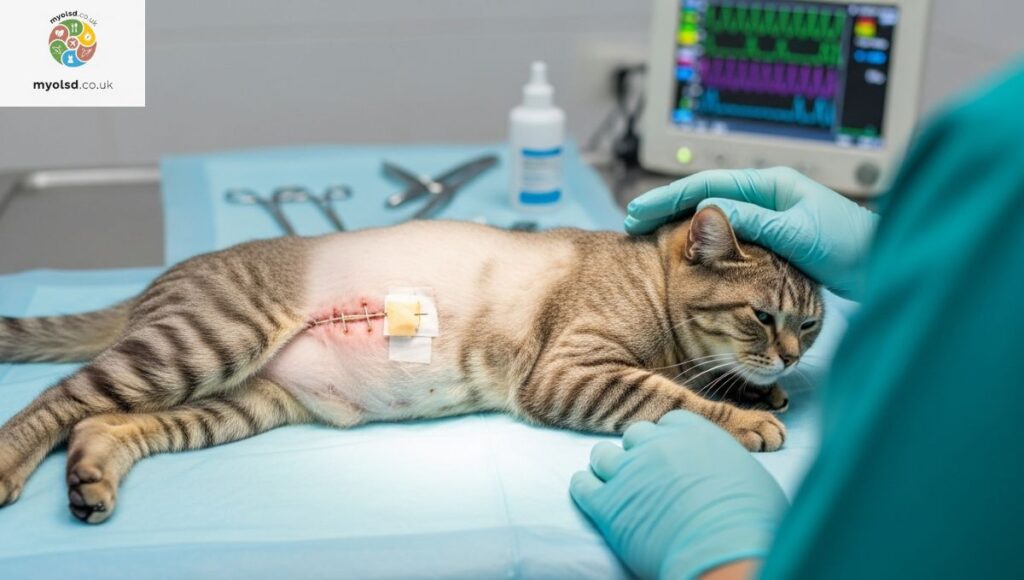
Spaying is a common surgical procedure that removes a female cat’s reproductive organs specifically her ovaries and uterus. Veterinarians perform this surgery to prevent pregnancy and reduce the risk of serious reproductive diseases. It’s one of the most responsible steps an owner can take for pet reproductive health and feline well-being.
During a spay surgery, your cat is placed under anesthesia, and a small incision is made in her abdomen. The operation usually takes less than an hour, but its benefits last a lifetime from preventing unwanted litters to lowering cancer risks and reducing hormone-driven behaviors.
What Does a Spay Surgery Involve in Cats?
A typical feline spay, also known as an ovariohysterectomy, involves removing both the ovaries and uterus through a small incision in the abdominal wall. The vet ensures your cat is fully anesthetized and pain-free throughout the process. Bloodwork and an ECG may be done beforehand to confirm anesthetic safety.
After the reproductive organs are removed, the incision is closed with sutures or surgical glue. Post-operative care includes pain management, antibiotics, and careful monitoring during recovery. The entire spay surgery process is designed to minimize discomfort while ensuring complete sterilization.
When to Spay a Cat?
Most veterinarians recommend spaying between five to six months of age, ideally before your cat’s first heat cycle. Early-age spaying offers the most health benefits including mammary tumor prevention and fewer hormonal behaviors. However, many vets now perform pediatric spays as early as six to eight weeks old, depending on the kitten’s weight and health.
If your cat has already gone through her first heat or is a bit older, don’t worry. There’s no strict cutoff point it’s generally safe to spay at almost any age, provided your vet confirms she’s healthy enough for anesthesia.
How Old Can a Cat Get Fixed?
You might be surprised to learn that cats can safely be spayed even in their senior years. Many vets have performed the surgery on cats 10 years old or older, provided they pass pre-surgery bloodwork and health evaluations. Age itself isn’t a barrier health status is.
For example, a healthy older cat with no underlying heart or kidney issues can handle anesthesia just fine. However, your vet may recommend additional monitoring or an IV fluid line during surgery to reduce risk and support recovery.
Read morte Article: Synopsis of When the Moon Hatched
Benefits of Spaying a Cat
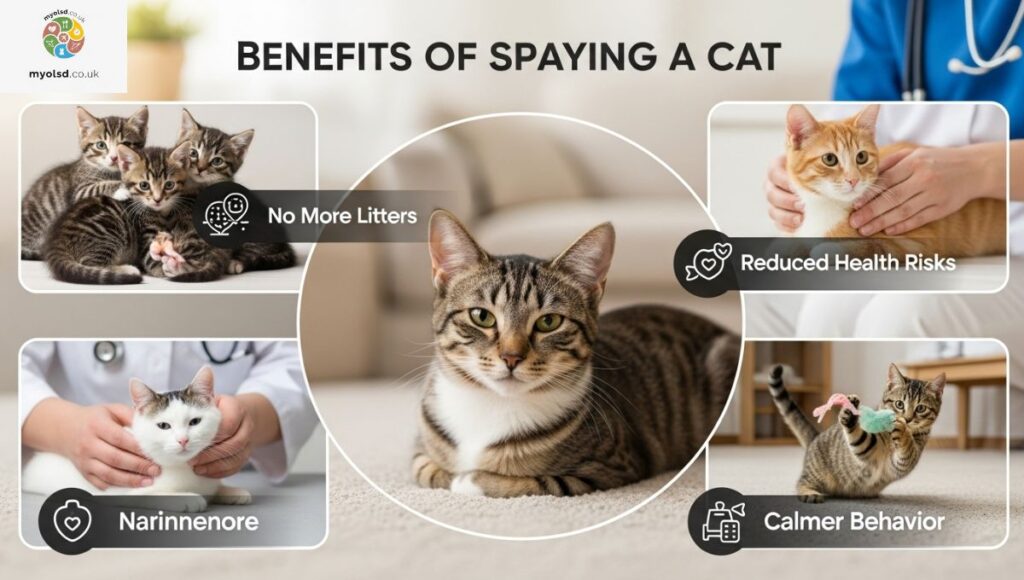
Spaying your cat provides long-term health, behavioral, and population benefits. It eliminates the risk of uterine infections like pyometra and drastically lowers the chance of mammary cancer if done before the first heat. Behaviorally, it helps reduce restlessness, loud howling, and the urge to roam.
It also contributes to feline population control, helping prevent thousands of unwanted kittens that may end up homeless. On top of that, a spayed cat often lives a longer, calmer, and healthier life, with fewer hormone-related stresses.
Side Effects of Spaying a Female Cat
While rare, some cats experience mild side effects such as temporary lethargy, loss of appetite, or minor swelling at the incision site. These typically resolve within a few days. Occasionally, hormonal changes may lead to slight weight gain, but that’s easily managed with a balanced diet and exercise.
Overall, the benefits far outweigh any short-term effects. Your vet will guide you through safe pain management and aftercare so your cat feels comfortable throughout her healing process.
Are There Any Potential Risks of Spaying a Cat?
As with any surgical procedure, spaying carries some risks mainly related to anesthesia or infection. Older cats or those with underlying conditions may face a slightly higher risk, which is why pre-operative bloodwork and a veterinary exam are essential.
Reputable vets use modern anesthetics and monitoring equipment to keep your cat safe. Complications like excessive bleeding, uterine rupture, or anesthetic reaction are rare, especially when performed by an experienced surgical team.
Are Complications After Spaying a Cat Common?
Post-surgery complications are uncommon, but owners should watch for signs like redness, swelling, or discharge from the incision site. Excessive licking or biting at the wound can delay healing that’s why many vets recommend using an Elizabethan collar (E-collar) during recovery.
If your cat seems unusually lethargic, refuses food, or develops a fever, call your vet immediately. Most cats recover without incident within 7 to 10 days, returning to normal behavior quickly.
Does Spaying Cause a Cat to Gain Weight?

Some cats gain a little weight after being spayed, mainly due to a slowed metabolism. Since hormone levels drop, they may become less active and burn fewer calories. However, this doesn’t have to be a problem.
Simply adjust feeding portions and encourage playtime. Regular exercise like chasing feather toys or climbing a cat tree will help maintain a healthy weight and keep your cat in great shape.
Can You Spay a Cat in Heat?
Yes, but it’s not always ideal. Spaying a cat during her heat cycle can make the surgery a bit more complex because the reproductive organs are swollen with increased blood flow. This can lead to slightly higher bleeding risk during the operation.
If possible, vets prefer to wait until the heat cycle ends. However, if your cat keeps going into heat or you’re concerned about accidental pregnancy, your vet may still proceed safely with extra precautions.
How to Tell if a Cat Is Spayed?
If you adopted your cat and aren’t sure whether she’s been spayed, look for a small scar on her lower abdomen. However, scars can fade over time, making it difficult to tell. Vets can confirm spay status through ultrasound, exploratory surgery, or a hormone test like the anti-Müllerian hormone (AMH) test.
Some cats also have a spay tattoo a small green or blue line near the incision site or an ear notch, especially in community cats as a sign of sterilization.
Preparing a Cat for Surgery
Preparation is simple but important. Your vet will usually instruct you to withhold food after midnight the night before surgery to prevent vomiting under anesthesia. Water is often allowed until a few hours before the appointment.
Before surgery, ensure your cat is healthy, parasite-free, and up-to-date on vaccines. A calm, stress-free morning routine and a comfortable carrier make the trip easier for both of you.
Read morte Article: Synopsis of When the Moon Hatched
Spaying a Cat Procedure: What to Expect
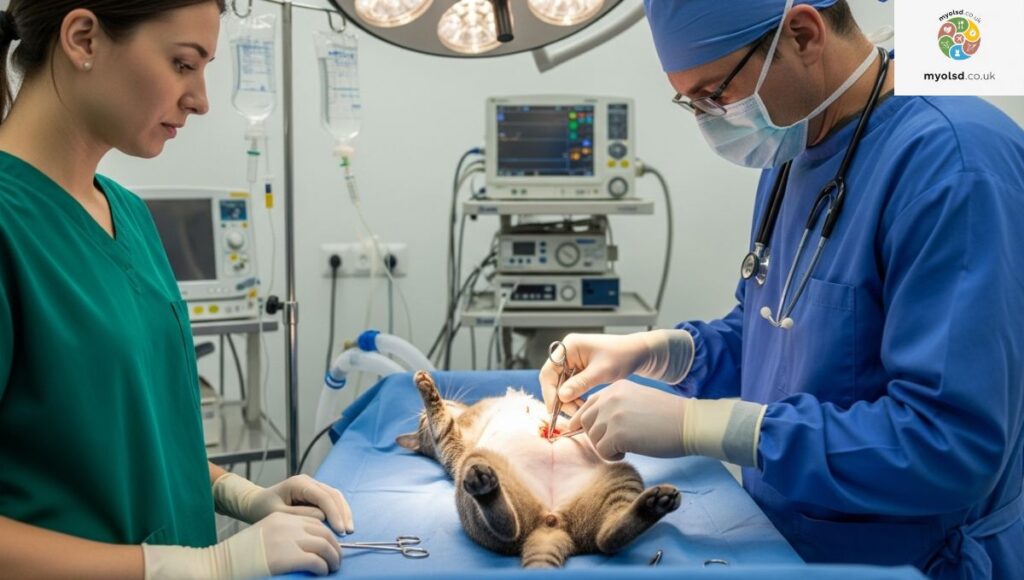
When you arrive at the clinic, your cat will undergo a quick pre-surgery exam, followed by anesthesia administration. The vet then performs the procedure, removes the reproductive organs, and closes the incision with sutures.
Your cat will stay for monitoring until she’s awake and stable. Most cats can go home the same day. The full recovery period typically lasts 10 to 14 days, depending on age and activity level.
How Much Does It Cost to Spay a Cat?
The cost varies based on your location, your cat’s age, and the type of clinic. On average, spaying costs $100 to $500 at private veterinary hospitals, but low-cost spay and neuter clinics can offer discounted rates as low as $50 to $150.
Always ask if the price includes pain medication, anesthesia, and post-surgery care. Some humane societies and community programs even provide free spay services for qualified pet owners to promote responsible ownership.
Spay Home Recovery Kit for Cats
A home recovery kit makes healing smoother. It should include:
- An E-collar to prevent licking
- Soft blankets and a quiet resting spot
- Prescribed pain medication and antibiotics
- Extra litter and disposable liners for hygiene
- A small litter box for easy access
- Clean gauze and antiseptic wipes (if recommended)
Keep your cat indoors, restrict jumping or running, and monitor the incision daily.
Post-Spay Care for Cats
After surgery, create a calm environment where your cat can rest undisturbed. Avoid loud noises and other pets for the first few days. Offer small meals, fresh water, and monitor for any signs of discomfort.
Most cats recover beautifully with minimal complications. Schedule a follow-up visit about 10 days post-surgery for suture removal and a quick health check. Once healed, your cat will enjoy a happier, healthier, and more peaceful life free from heat cycles and reproductive stress.
Final Thoughts
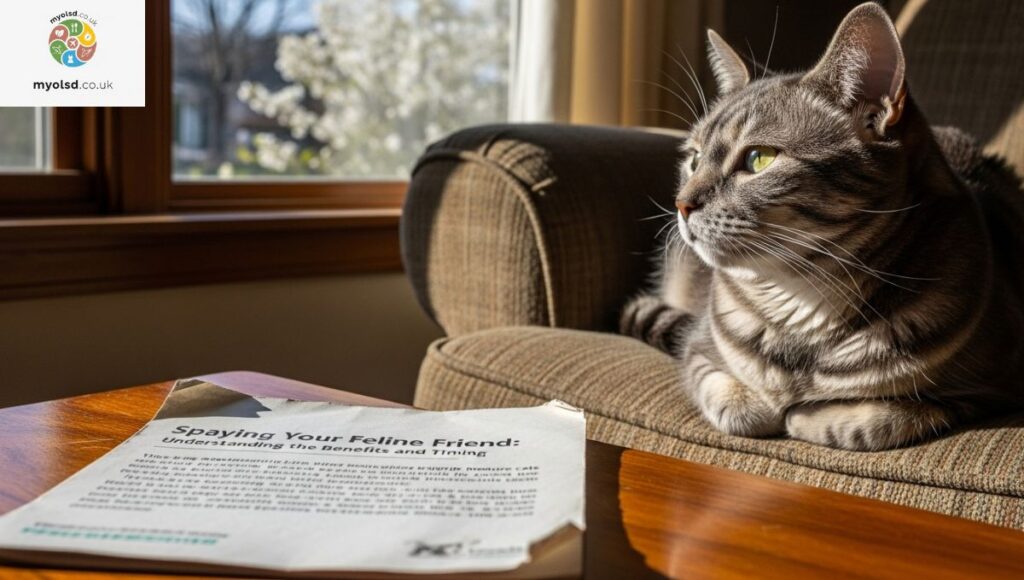
Many cat owners wonder when is it too late to spay a cat, especially if their pet is older or has already gone through a few heat cycles. The good news is, age doesn’t always stop your cat from safely having the procedure. With proper vet evaluation and care, even mature cats can still enjoy the long-term health and behavioral benefits of being spayed.
If you’ve been putting it off or feeling unsure about when is it too late to spay a cat, talk to your veterinarian today. They can assess your cat’s health, explain the safest options, and guide you through recovery. Spaying at the right time even later in life can make a huge difference in your feline’s comfort, safety, and overall happiness.
FAQs
What happens if you spay a female cat too late?
If you spay a female cat later in life, she might already have developed certain habits or mild health risks, but it can still prevent future issues like uterine infections and unwanted pregnancies.
Can I spay my cat after 2 years?
Yes, you can safely spay a cat after 2 years. As long as she’s healthy, your vet can perform the surgery without major risks.
Is it safe to spay a 3-year-old cat?
Absolutely. Spaying a 3-year-old cat is generally safe and still offers great health and behavior benefits.
Should I spay my 7-year-old cat?
Yes, older cats can still be spayed if they’re in good health. Your vet may run tests first to ensure she’s fit for surgery.
Will spaying calm a female cat?
Yes, spaying often helps reduce mood swings, yowling, and roaming that come with heat cycles, making cats calmer overall.
What is the oldest age you can spay a cat?
There’s no strict age limit. Cats can be spayed even in their senior years if they’re healthy enough for anesthesia and recovery.

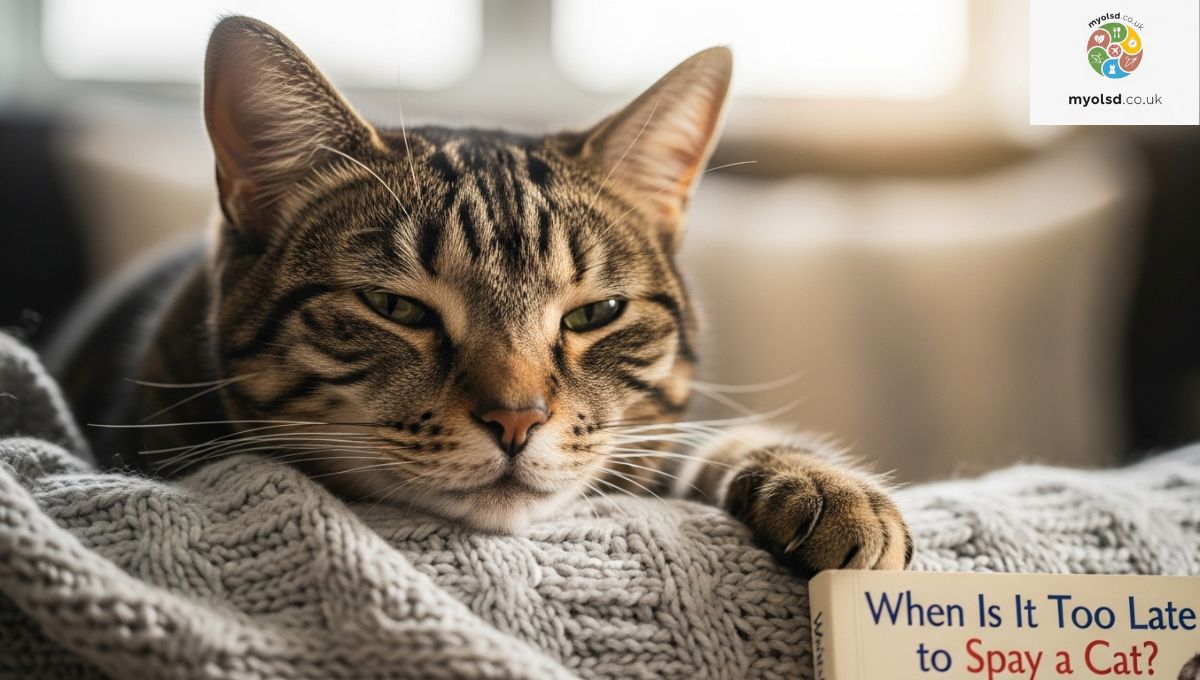
44vh26